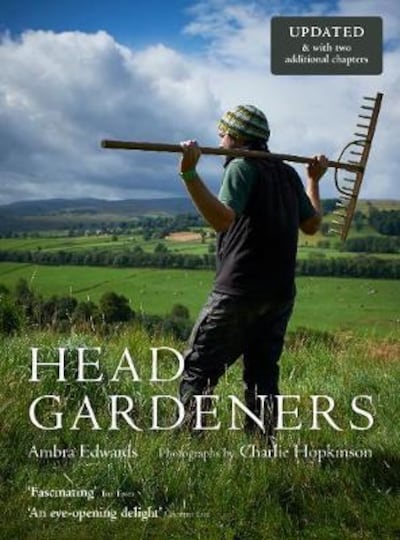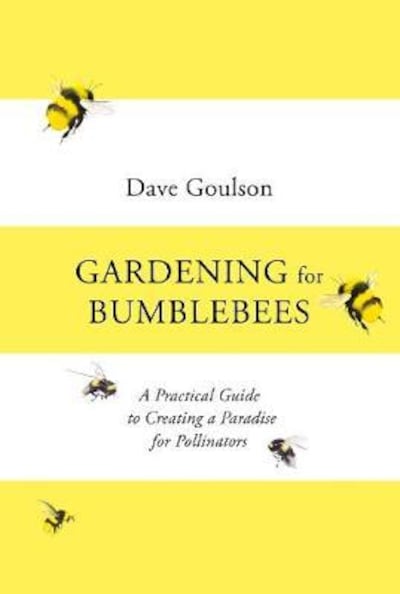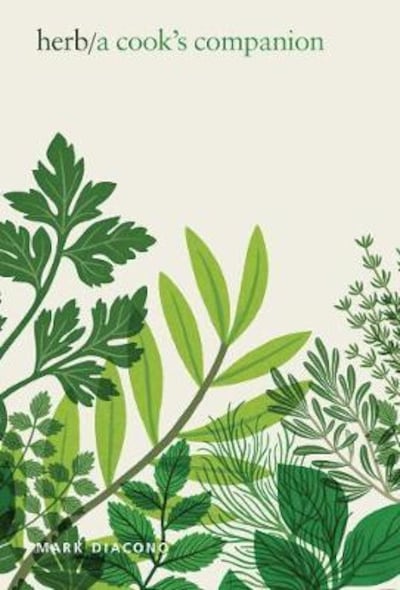Looking for some green-fingered reading material to enjoy on that longed-for summer break? Here’s a look at some of the best new gardening books.
With a long-established international reputation as a gardener, grower, writer and one of the earliest champions of the slow-flower movement, UK-based Sarah Raven is a familiar name to many. Her latest book, A Year Full of Flowers: Gardening for all Seasons (Bloomsbury, £25), is a hugely informative, lushly-illustrated seasonal guide to growing garden flowers throughout the year, from the first tiny irises, polyanthus and hyacinths of February to summer's rich bounty of sweet pea, cosmos, salvias, dahlias and roses and the special joys of winter blooms such as amaryllis (Hippeastrum).
Known for her brilliant use of colour and love of scented flowers as well as her rigorous designer's eye when it comes to selecting the loveliest, most hard-working, productive varieties (she regularly carries out trials of new plant introductions at her garden, Perch Hill in Sussex), Raven shares her considerable knowledge and expertise generously. Each month-themed chapter includes a very hands-on, practical guide to a range of essential gardening skills such as pruning, sowing seeds, taking cuttings, making plant-based liquid feeds and planting bulbs. The excellent plant profiles of different key garden flowers – winter-flowering irises, violas, narcissus, tulips, roses, salvias sweet pea, dahlias, chrysanthemums, pelargoniums, amaryllis – feature plenty of sumptuous photographs by Jonathan Buckley and include a series of very useful shortlists with recommendations for the very best, most garden-worthy varieties. This is one of those gardening books that you'll find yourself going back to again and again.

First published in 2017 when it won the prestigious Garden Media Guild Inspirational Book of the Year award, the newly-expanded paperback edition of Head Gardeners by Ambra Edwards (Pimpernel Press, £20) includes additional profiles of two British head gardeners, Stephen Griffith of Abbotsbury Subtropical Gardens in Dorset and Fiona Dennis of Charleston Farmhouse in East Sussex, along with updated interviews with the 14 other head gardeners featured in the first edition, an impressive list that includes Fergus Garrett of Great Dixter, and Troy Scott Smith of Iford Manor Gardens. Few writers have succeeded in capturing the magical mix of different skills, talents and personality traits that distinguishes all great head gardeners as eloquently as Edwards does. In a world where the work of professional horticulturists is so often underrated and misunderstood, she shines a light on the graft and the craft.
Container gardening is a world unto itself, one that presents as many possibilities as it does challenges. In his latest book, The Flower Yard: Growing Flamboyant Flowers in Containers (Kyle Books, £22), the young Kew-trained British gardener Arthur Parkinson shows readers how to do it in style, utilising every square inch to produce exuberant, joyful concoctions brimming with colour and scent. Parkinson writes persuasively and knowledgeably for a new generation of young gardeners short on traditional growing space, encouraging them to see the special magic of growing in pots where every container is treated like "a great living vase of flower arrangements". Beautiful to look at, his latest book includes plenty of valuable practical advice on pot gardening throughout the seasons, from choosing the best containers and most suitable varieties (just like his mentor Sarah Raven, he has a brilliant eye for colour) to keeping plants healthy and floriferous and propagating from seed.
Planet-friendly gardening

Best-selling British author, biologist and conservationist David Goulson's previous books include A Sting in the Tale and The Garden Jungle, two publications that have earned a place on many Irish gardeners' bookshelves. His latest Gardening for Bumblebees (Square Peg/ Penguin, £16.99) continues his exploration of that same theme of planet-friendly gardening, offering readers a wealth of practical advice and information on how to create a haven for these precious pollinating insects from selecting the most bumblebee-friendly species of flowering plants to creating the most suitable sites for them to nest and breed.

Known for his adventurous, innovative plot-to-plate approach to food-growing, the gardener cook and author Mark Diacono's latest book Herb: A Cook's Companion (Quadrille, £26) is an elegantly-written, handsomely illustrated, comprehensive A-Z guide to growing and cooking with herbs, a group of plants that he affectionately describes as "inexhaustible pleasure . . . elevators [that] carry other ingredients more deeply into the senses". Diacono's tone throughout is encouraging, friendly and participatory, gently urging his readers to discover for themselves how easy and immensely rewarding herb-growing is while sharing countless brilliant nuggets of advice on everything from propagation and cultivation to preparing herbs (who knew there was such a thing as a herb chiffonade) and using them in the kitchen.

With topics such as climate-change, habitat loss and dwindling biodiversity rarely out of the headlines, the RHS and journalist and garden writer Sally Nex's new book, RHS How to Garden the Low-Carbon Way: The Steps You Can take to Help Combat Climate Change (DK,£12.99), is a timely one. From creating wildlife-friendly ponds and wildflower meadows to designing low-carbon garden sheds, using rainwater-permeable paving and peat-free compost and finding ways to weed without resorting to environmentally-harmful chemicals, Nex offers many useful pointers for the growing band of gardeners determined to take a "deep green" approach to cultivating their plots, while also explaining the science behind the sometimes-scary newspaper headlines in a succinct but accessible way.
One of the wonderful silver linings of the pandemic lockdowns is the opportunity it's given many to discover/ rediscover their love of gardening, something highlighted in My Real Garden: Hacks, tips and tricks from people who love to get their hands dirty, a collaborative publication by the freshly-minted community of gardeners who first found each other via the Instagram feed @mydreamgarden of the British broadcaster and RHS Chelsea gold-medal winning garden designer Anne-Marie Powell (she co-edited the book along with the garden writer Tamsin Westhorpe). A cheery, no-nonsense book, it's brimming with down-to-earth tips and money-saving advice on how to build the garden of your dreams along with moving accounts of different contributors' lockdown stories (£25, see myrealgarden.co.uk )
This Week in the Garden
July marks that critical tipping point in the garden – literally – when taller-growing plants begin to reach a height when they could be easily damaged or knocked over by heavy rainfall and/or strong winds. Avoid the heartbreak by giving them some form of discreet physical support; stakes, bamboo sticks, netting and custom-made metal plant supports are all suitable depending on the species. In the case of fast-growing climbing plants such as sweet pea, cobaea, rhodochiton and morning glory vine, make sure to keep gently tying in any new growth to horizontal wires or netting fixed to the wall or structure against which they’re growing. It’s always a good idea to deadhead any faded flowers before doing this to promote the production of plenty of new blooms.
If you grow the luscious ornamental climber known as wisteria, then July is a good time of the year to give the plant its summer pruning to keep it in good shape and encourage a plentiful display of those beautiful dangling flower racemes next year. To do this, use a sharp, clean secateurs to cut the new /young whippy shoots back to five or six leaves. Seerhs.org.uk for further details.
Dates For Your Diary: Patthana Garden, Kiltegan, Co Wicklow, every Sunday at 2pm, a guided walk and talk tour of the gardens by its owner, the artist and designer TJ Maher, no booking required, see patthanagardenireland.com for details.













